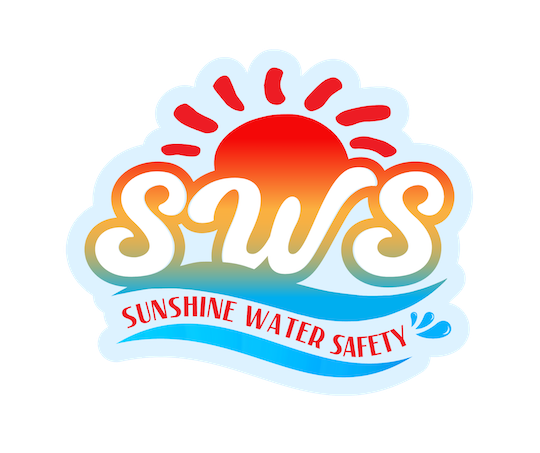
Water Safety
Drowning is the leading cause of accidental death for children under age 5, and the leading cause of death for children with Autism.
The most effective water safety plan includes a multi-layered approach.
Layers of Protection
Prevent your child from reaching the water unattended
Adult Supervision
Adult supervision is the most effective way to prevent aquatic accidents. Be your child’s CEO with Constant Eyes On. Always assign a designated Water Watcher when you have to direct your attention elsewhere.
However—there is no such thing as our children NEVER being out of our sight. Children can and do escape adult supervision, which is when additional layers of protection become essential!
Locks and Alarms
Install locks high on doors and use deadbolt locks on doors with the key removed to prevent older siblings from unlocking and opening doors.
Install alarms on all windows and doors. Combined with locks, alarms provide a backup alert if a door or window has mistakenly been left unlocked.
Secure or remove pet doors. Crawling through a pet door is not an uncommon method of escape for little ones. Always secure pet doors and permanently remove them when no longer needed.
Pool Fence
Pool fences are a crucial layer in a water safety plan. Mesh pool fences are non-climbable and have proven to be the most effective barrier to the pool. The pool should be surrounded on all four sides, and a self-closing, self-latching gate is recommended for easy entry and exit under adult supervision.
Children escape adult supervision and layers of protection fail
Pool Alarms
Pool alarms detect a disruption in the water to alert that a child or pet has entered the pool.
We want to be mindful that alarm fatigue can result after a number of “false alarms”, which makes pool alarms a less effective layer of protection when not used in conjunction with other layers.
Self-Rescue Swim Lessons
Self-rescue skills are the only layer of protection that travels with your child to any body of water.
We do not promote water acclimation courses that teach children that the water is a fun and safe place to be before they have any aquatic skills. Babies as young as 6 months CAN and should learn to save themselves in an aquatic accident.
Aquatic accidents can happen to any family
CPR
Parents and families should be prepared for an emergency, including being CPR certified. Knowing what to do in an aquatic emergency can save precious time and prevent further injury.
Water Safety tips
There is no such thing as “Drown-proof”
If a child is missing, check ALL places with water FIRST.
No floaties in the pool.
Put away pool toys & inflatables when pool time is over.
Wear USCG-approved life jackets when on a water vessel or when in or near natural bodies of water.
No breath-holding games, which can lead to shallow water blackouts.
Dress your child in brightly colored swimwear that contrasts with the water.

Vacation Water Safety Tips
Water safety and drowning do not take vacations. Be sure your family is prepared for your next trip.












